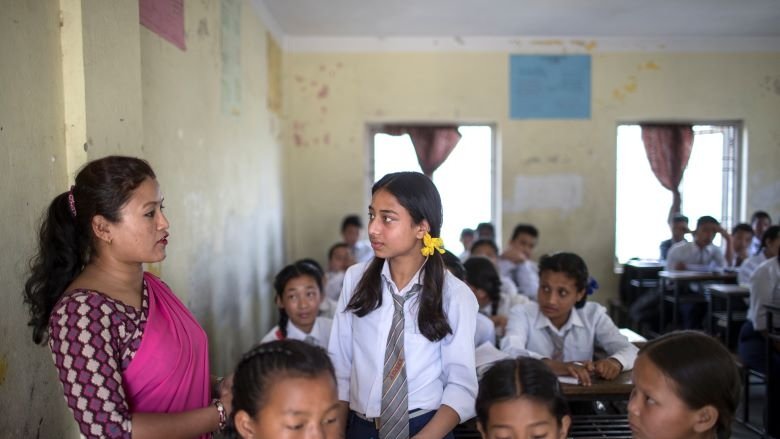Challenge
Over the past two decades Nepal made significant strides in education access, equity, and completion rates, but several challenges persisted in improving learning outcomes, equitable access, and system strengthening. These included: inconsistent education quality at basic and secondary levels, with learning outcomes varying by geography, school, and individual/household characteristics; a considerable number of out-of-school children in basic education and low transition to and retention in secondary schools, particularly for disadvantaged children; and systemic constraints within the school sector.
The 2015 Constitution emphasized political devolution and a federal structure, demonstrating a commitment to greater inclusion. Nevertheless, the lack of coherence on federalism specifics, particularly roles and responsibilities, and implementation delays affected people's expectations.
Approach
The development objective of the School Sector Development Program (SSDP) was to enhance quality, equitable access, and efficiency in Nepal's basic and secondary education by supporting the Government's SSDP.
The Bank’s Program for Results (PforR) instrument had two aims: to ensure disbursement-linked indicators (DLIs) focused on accountability for results and outcomes, incentivizing government ownership and implementation of vital reforms and policies in the education sector; and reinforce the use of country systems for program implementation, fiduciary, environmental, and social systems, and monitoring arrangements in a sector-wide approach (SWAP).
The DLI-based reforms in school and teacher management, accountability, and system strengthening in data and fiduciary arrangements emphasized quality improvements, equitable access, participation, and learning outcomes.
Additionally, an investment project financing (IPF) component funded by the Global Partnership for Education (GPE) COVID-19 Accelerated Funds was processed under emergency procedures to address the pandemic's impact on the basic education system and school closures.
